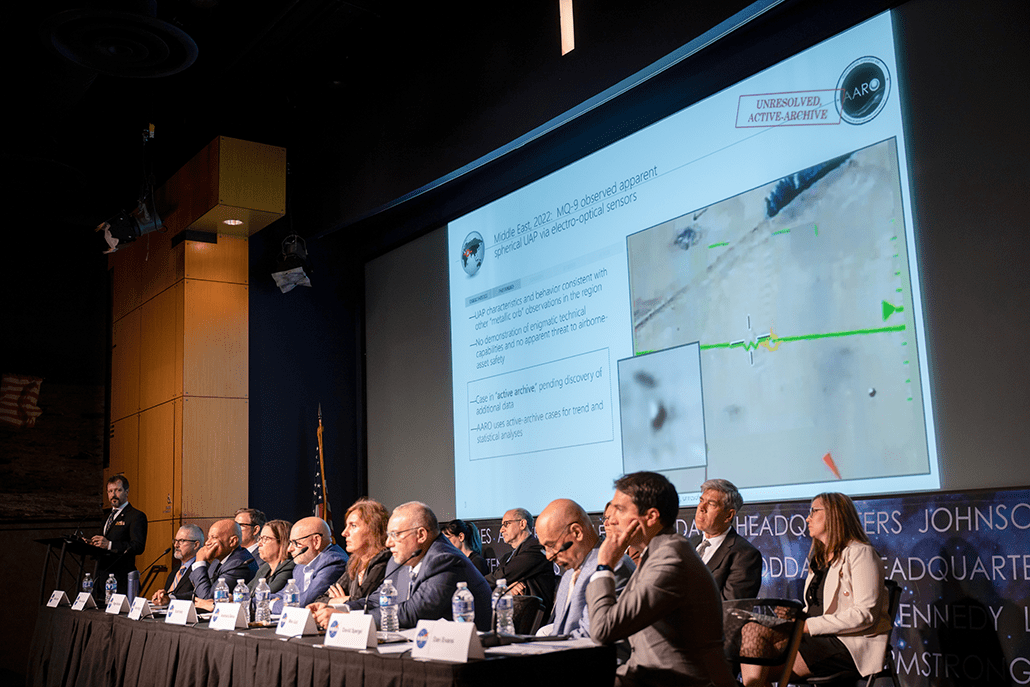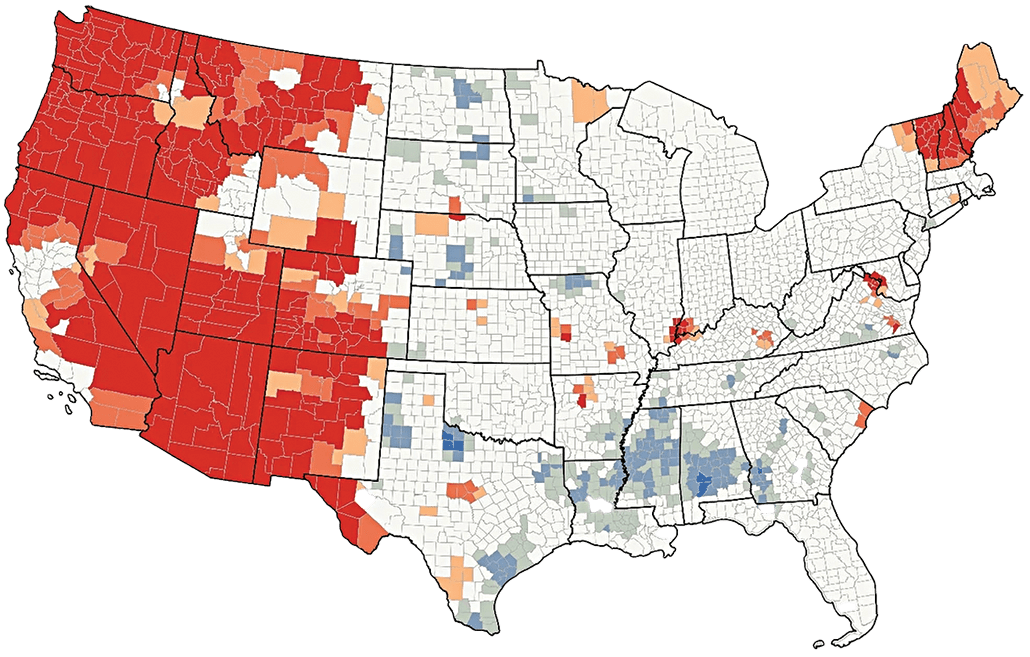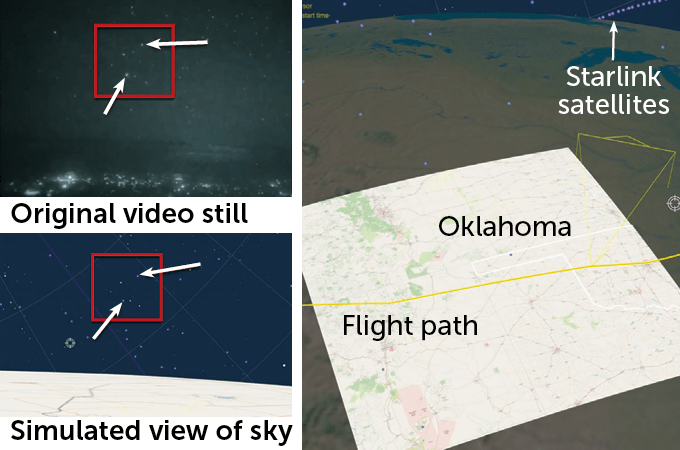For millennia, humans have seen inexplicable things in the sky. Some have been beautiful, some have been terrifying, and some — like auroras and solar eclipses before they were understood scientifically — have been both. Today’s aircraft, balloons, drones, satellites and more only increase the chances of spotting something confounding overhead.
In the United States, unidentified flying objects, or UFOs, came into the national spotlight in the late 1940s and early ’50s. A series of incidents, including a supposedly crashed alien spaceship near Roswell, N.M., generated something of an American obsession. The Roswell UFO turned out to be part of a classified program, the remnants of a balloon monitoring the atmosphere for signs of clandestine Russian nuclear tests. But it and other reported sightings prompted the U.S. government to launch various projects and panels to investigate such claims, as Science News reported in 1966 (SN: 10/22/66), as well as kicking off hobby groups and conspiracy theories.
In the decades since, UFOs have often come to be dismissed by scientists as the province of wackos and thus unworthy of study. The term UFO has a smirk factor to it, says Iain Boyd, an aerospace engineer at the University of Colorado Boulder and director of the school’s Center for National Security Initiatives.
But government agencies and officials are trying to change that attitude. Among the biggest concerns is that the stigma associated with reporting a sighting has the side effect of stifling reports from pilots or citizens who might have valuable information about potential threats in U.S. air space — such as the Chinese spy balloon that traversed North America and made headlines last year.
“If there’s something interfering with flights, people or cargo, that’s a problem,” Boyd says.
To help reduce the stigma, many serious investigators now refer to UFOs as “unidentified anomalous phenomena,” or UAPs, coined by the U.S. Department of Defense in 2022. “The term UAP brings science to the issue,” Boyd says. It also rightly broadens the view to include natural atmospheric phenomena as well as things outside the atmosphere, such as satellites and particularly bright planets such as Venus.

Investigators of all types have a lot of questions about UAPs that they believe deserve serious scientific scrutiny: Which UAPs are something real and which are merely artifacts of the sensors that detect them? If real, which may be a threat to aviation? A threat to national security? Do they point to some unknown natural phenomena?
Answers may be forthcoming. In June 2022, NASA announced an independent study to determine how the agency could lend its scientific expertise to the study of UAPs. Meanwhile, military and commercial pilots have felt more comfortable making reports and even providing videos taken during close encounters. Some of those reports were discussed as part of congressional hearings in 2022 and 2023, which were covered widely by the media and in part focused on more government transparency (SN: 5/19/22). Those were the first open hearings since the mid-1960s.
Americans for Safe Aerospace, an advocacy organization with a focus on UAPs, supports legislation that would help provide a way for pilots to confidentially report potential sightings to the government.
And government agencies increasingly recognize publicly that strange phenomena in the skies are worthy of attention — whether the phenomena are signs of aliens or not. In 2022, the Pentagon established the All-domain Anomaly Resolution Office to serve as a clearinghouse for government reports of UAPs and for analysts determining if UAPs pose threats. The National UFO Reporting Center, a nonprofit established in 1974, and other organizations continue to collate reports from the public.
By bringing UAPs into the realm of science, the hope is to make the unexplained explainable.
Where do UAP sightings occur?
Since its founding, the National UFO Reporting Center has kept a database of UAP sightings, including past and recent incidents reported through its telephone hotline, the mail and online. The database includes almost 123,000 sightings in the United States from June 1930 through June 2022. It’s a trove of data that few if any peer-reviewed scientific studies have used, says Richard Medina, a geographer at the University of Utah in Salt Lake City.
For a study reported in 2023, Medina and colleagues scoured the database to see if they could identify which factors, if any, might affect the number of sightings in a particular area. They focused on the almost 99,000 reports, or about 80 percent of the total, that came from the continental United States from 2001 through 2020. They stuck to the continental United States because tree cover was a factor they were studying, and detailed maps of forested land aren’t available for Alaska’s interior.
First, the researchers calculated the number of UAP sightings that occurred in each county in the Lower 48 states for the 20-year period. Then, they tried to correlate the number of sightings per 10,000 people that lived in each county with environmental factors.
As expected, UAP sightings weren’t as frequent in counties with a lot of tree cover and large amounts of nighttime light pollution, the researchers reported in Scientific Reports. Average cloud cover didn’t seem to affect the number of sightings one way or another — but maybe that’s because the team looked at average cloud cover over the course of the year, not the amount of cloud cover at the time of the sighting, Medina suggests.
What did boost the number of sightings substantially was proximity to airports or military installations. Although this analysis doesn’t specifically say that many UAPs in such areas can be attributed to aircraft associated with those facilities, the data are suggestive, Medina notes. At such sites, aircraft are likely to be closer to the ground and more visible than at other places, he adds.
And many of those aircraft could have been classified or experimental craft, according to a report issued earlier this year by the All-domain Anomaly Resolution Office. After undertaking an analysis of reports made to or by the government since 1945, that office found that many sightings could be attributed to never-before-seen craft such as rockets, drones or aircraft incorporating stealth technologies. The analysis found no evidence that any UAPs were signs of extraterrestrials and no evidence that the U.S. government ever had access to alien technology.
A second report, with new analyses focused on more recent sightings, will be released later this year.
What are UAPs?
The task of pinning down the sources of UAPs has become easier thanks to the ever-growing analytical prowess of computers and advanced visualization tools. “What used to take months of analysis before can now be done in just a few minutes,” says Mick West, a retired software engineer in Sacramento, Calif., who runs the website Metabunk.org, where people can post and discuss UAPs and other unusual phenomena.
Take, for instance, an enigmatic sighting of lights in the sky over the Great Plains one night early in 2023. Video of the UAP taken by a commercial pilot in flight caused a stir when it was posted online soon after the sighting, West says.
Whoever posted the video didn’t include specifics about the sighting, other than to say it was taken somewhere over the central United States on a particular date. A pattern of lights on the ground, which turned out to be warning lights atop turbines in a large wind farm, helped investigators on Metabunk locate the plane as somewhere in western Oklahoma.
Certain details about the sighting, such as flashes of lightning on the distant horizon, wouldn’t have occurred on the supposed date of the video, West notes. Using public meteorological databases about the times, dates and locations where lightning strikes occur, the Metabunk crew figured out the video actually had been taken a few days earlier than reported. The date, in turn, helped the group figure out which flight the video was taken from.
Then, knowing the date, time and precise coordinates, West and collaborators used computer simulations to re-create what the sky would have looked like in the direction where the UAP was seen. The mystery lights were actually a cluster of Starlink satellites reflecting sunlight from below the horizon as they swooped across the sky. With the first batch launched in 2019, Starlink satellites now circle Earth in the thousands, providing internet service for locales worldwide (SN: 3/12/20). Their movements and patterns in the sky “are still a mystery to some pilots,” West says.
West suggests that people are often too quick to jump from “I saw some lights in the sky” to “Aliens!” With so many possibilities for what UAPs might be — optical illusions, meteorological phenomena and aviation-related sightings, plus more — the experience generally turns out to be more mundane than observers imagine, West says.
“We’re not really looking for aliens,” he explains. “We’re looking to explain what people are seeing.”
The study of UAPs needs more and better data
Good data are key to deciphering UAPs, but they’re often in short supply. Although many reports by pilots include images taken by onboard sensors or with handheld video cameras, those instruments often aren’t sophisticated enough to capture the necessary details. The same is true for sightings reported from the ground, where the specifics of a presumed object’s direction and speed as well as general environmental conditions are often lacking.
By contrast, NASA has a wealth of data from satellites that monitor Earth. Though they don’t have the resolution to spot relatively small objects the size of most UAPs, the satellites are poised to play a supporting role, says astrophysicist Thomas Zurbuchen. Now at ETH Zurich, he’s a former associate administrator of NASA’s Science Mission Directorate. NASA satellites could be key in providing details on any environmental conditions that may coincide with UAPs, according to the NASA team’s report, released in September 2023. Data collected by commercial satellites can play a similar role.
Gathering and analyzing data is a good way to address what UAPs are, Zurbuchen says. “We should be excited about things we don’t understand, whether they’re natural phenomena, balloons or other things,” he says. “We currently don’t understand what’s flying in our airspace, not to the level that’s needed.”
Boyd also emphasizes the need for better data. The sensors typically used on planes today “weren’t designed to detect UAPs, and the signals that we do pick up are sometimes hard to interpret,” he says. Yet getting the right data may prove challenging and expensive. Integrating new types of sensors into the already-complicated electronic systems of military and commercial aircraft would be something of a “needle-in-a-haystack type of endeavor,” Boyd says. “There are more than 100,000 flights per day; how many have actually seen anything?”
Perhaps ground-based instruments are the way to go. Several research teams are developing suites of instruments that can observe a broad range of characteristics and be deployed to sites where UAPs are frequently seen. Some of these packages could be ready to deploy late this year.
Wes Watters, a planetary scientist at Wellesley College in Massachusetts, is on one team now developing such instrument packages. The observatories are intended to “determine whether there are measurable phenomena in or near Earth’s atmosphere that can be confidently classified as scientific anomalies,” he and colleagues proposed in the March 2023 Journal of Astronomical Instrumentation. Or, in simpler terms, “to figure out what’s normal versus what’s not normal,” he explains.
Designing such observatories is complicated by the fact that not all UAPs are the same. But previous fieldwork, as well as the observations made by people during UAP sightings, is a rich source of information about what measurements could be useful, Watters says. Besides sensors for detecting and characterizing a UAP itself, instrument packages will collect weather data, which could help researchers interpret the other measurements.
Watters and colleagues are developing three styles of instrument packages as part of the Galileo Project. Led by Harvard University astronomer Avi Loeb, the project seeks to bring the search for signs of extraterrestrial technologies into mainstream scientific research.
The most elaborate instrument package will sport arrays of wide-field cameras for targeting aerial objects and triangulating their positions; narrow-field cameras for tracking objects across the sky; radio antennas and receivers; microphones that can detect sound across a wide range of wavelengths; and computers that can integrate, process and analyze data. These weather-resistant systems will function autonomously 24/7 and be deployed at sites with electrical power and internet connectivity.
These observatories will likely cost around $250,000 each and be deployed to at least three sites for up to five years.
A second, more portable option will be designed for rapid deployment for up to two weeks to sites that don’t have access to electrical power or internet. Each costing about $25,000, these simpler packages will be monitored daily, with data recorded and then processed later and elsewhere. The instruments won’t necessarily be weatherized, restricting their operation to mild-weather locales.
The third, simplest and least expensive package will host low-end, consumer-grade sensors and instruments, Watters says. They’ll be easy to maintain, monitor the sky within a radius of five kilometers and operate continuously for up to a year, relying on solar and battery power if need be. Groups of these packages can be networked together to cover a broad region. Each package will probably cost about $2,500.
With these sorts of instrument packages — and open minds, Watters suggests — researchers are bound to make new discoveries. “It’s impossible to make sense of these phenomena until we collect the right kinds of data,” he says.
In their 2023 report, Watters and colleagues noted that though several teams are developing or using instrument packages, none have yet reported detection of UAPs in peer-reviewed papers. The Galileo Project, including Watters’ team’s research, is funded by private donations, including a recently received $575,000 grant to establish and monitor a ground-based observatory somewhere in the Pittsburgh area.
The goal is not to explain away UAPs, Watters says. Instead, he notes, “we’re about identifying and characterizing what they are or might be.”
#Scientists #UFOs #Heres
Image Source : www.sciencenews.org

